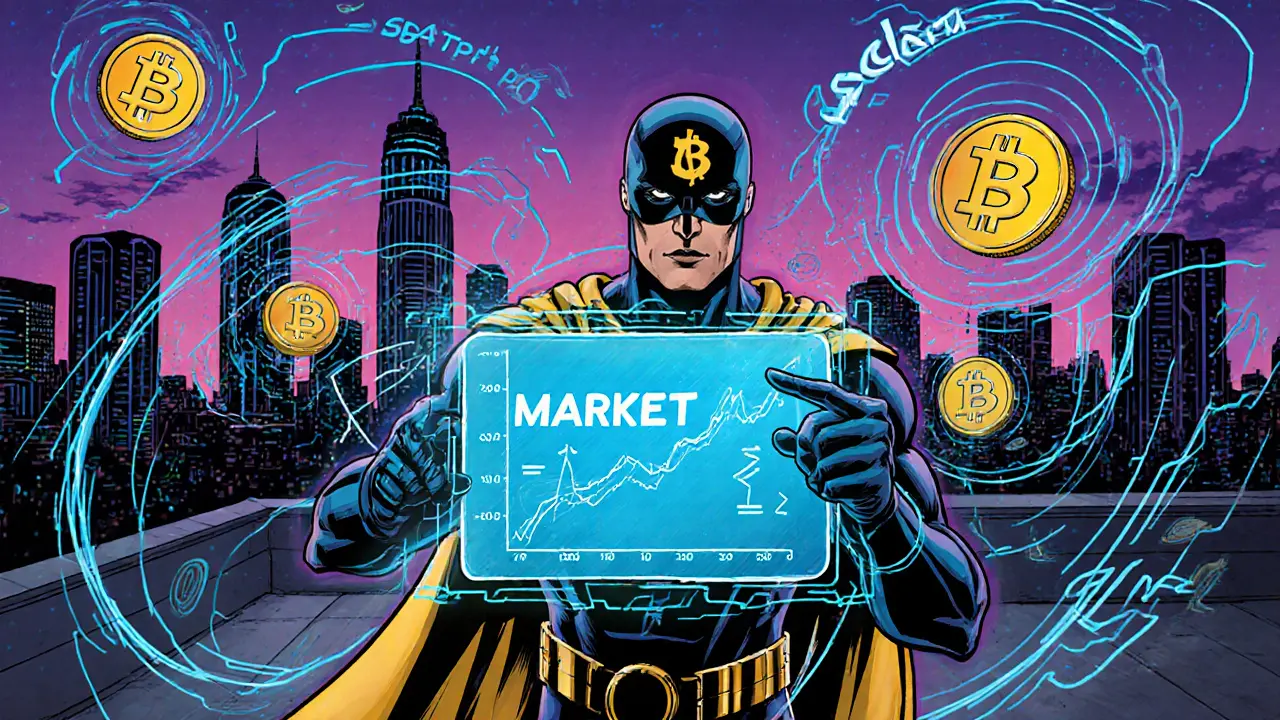When you hear the term crypto market capitalization, the aggregate dollar value of every cryptocurrency that’s currently circulating. Also known as crypto market cap, it gives you a snapshot of the whole industry’s size and health. Think of it like the total market value of all listed companies on a stock exchange, but for digital assets. Crypto market capitalization is calculated by multiplying each coin’s price by its circulating supply, then adding those figures together. This single number can swing wildly because it reflects price changes across thousands of tokens, from Bitcoin to obscure meme coins.
Several forces push the market cap up or down. First, a crypto exchange, a platform where users buy, sell, and trade digital assets decides which coins are listed and how easily traders can access them. When a major exchange adds a new token, that token’s price often spikes, adding fresh value to the total cap. Second, an airdrop, a distribution of free tokens to a community can suddenly inflate a coin’s circulating supply. While airdrops aim to boost awareness, they also raise the overall market cap—sometimes temporarily, sometimes for good. Third, blockchain scalability, the ability of a blockchain to handle more transactions as demand grows influences investor confidence. Scalable chains attract more users and developers, which strengthens demand and pushes prices higher, feeding back into the cap. Finally, Bitcoin remains the anchor: its price movements ripple through the entire market, dragging the cap up when it climbs and pulling it down during corrections. In short, crypto market cap encompasses exchange listings, airdrop events, and scalability upgrades, and it requires solid infrastructure and community interest to stay stable.
The collection of articles below dives deep into each of these drivers. You’ll find a modular blockchain architecture guide that explains how scalability upgrades work, detailed airdrop walkthroughs for tokens like Knight War (KWS) and REVV, and honest exchange reviews that break down fees, security, and licensing across regions such as Indonesia and Thailand. There’s also a step‑by‑step Bitcoin DCA strategy for anyone looking to smooth out price volatility, plus a security primer on hash collisions and privacy versus surveillance battles. Whether you’re a beginner trying to grasp why the market cap jumps after a new exchange listing, or an experienced trader eyeing the impact of upcoming airdrops, these posts give you practical context and actionable tips. Ready to explore the data, trends, and tools that shape crypto market capitalization? Scroll down to start digging into the specific guides and analysis.

Learn what cryptocurrency market cap means, how to calculate it, why it matters, and how investors use it to assess risk and compare assets.